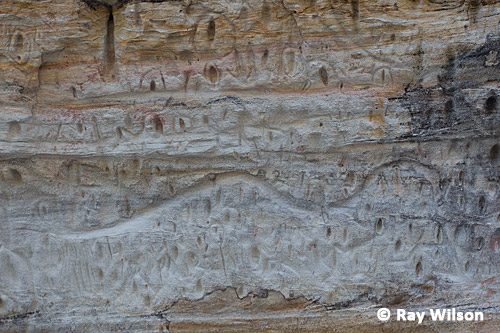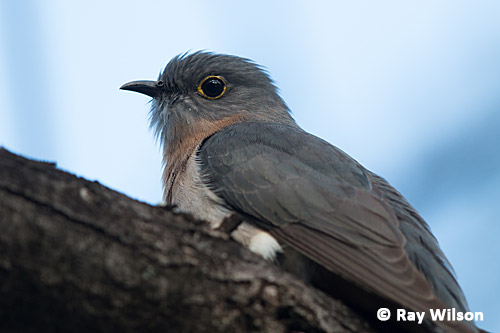
- Home
- Photography Tours
- Diary / Blog
- Galleries
- Foreign Trips
- Tasmania 2016
- NE Queensland 2016
- Western Alps 2016
- NE Spain 2016
- Australia's Wet Tropics 2015
- Australia's Top End 2015
- SW Australia 2015
- Switzerland 2015
- Andalucia 2015
- Belize 2015
- Australia 2014
- Switzerland 2014
- Belize 2014
- Bahama Islands 2014
- Switzerland 2013
- Ecuador 2012-2013
- Florida 2011-2012
- Vancouver Island 2011
- Australia 2010
- Peru 2008
- Bulgaria 2007
- Lesvos 2006
- California 2006
- New Zealand 2005
- Extremadura 2005
- Goa, India 2004
- The Gambia 2003
- About
September 2014
14th-17th September 2014
Carnarvon Gorge, Queensland, Australia
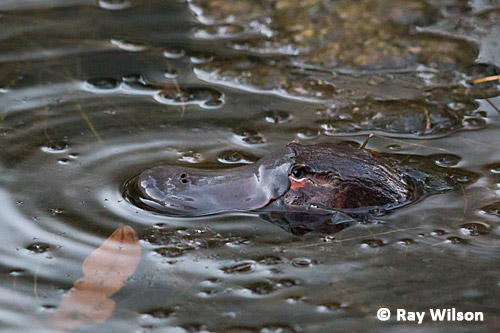
Duck-billed Platypus (Ornithorhynchus anatinus)
Carnarvon Gorge, situated 720km northwest of Brisbane (about 6 hours inland of Mackay), is a spectacular geological feature in the heart of the semi-arid sandstone country of central Queensland which also has significant cultural interest, including some of the best examples of stencil rock art in Australia. As with many areas containing permanent water, the gorge is considered a sacred site by the indigenous aboriginies who believe the gorge was created by the rainbow serpent Mundagurra.
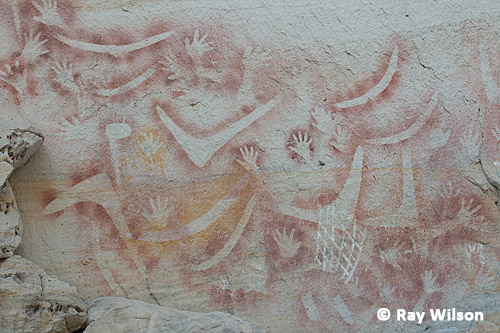
Stencil art is created by placing an object on the rock and blowing a mixture of ground ochre and a liquid binding agent (usually saliva or blood) around the edges of the object. The most commonly stenciled object are hands, but other objects depicted include boomerangs, clubs and nets.
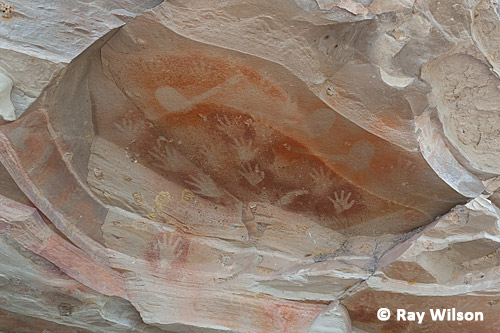
Carbon-dating of charcoal from cooking fires in the gorge has shown that the site has been visited by aboriginal people for at least 3500 years.
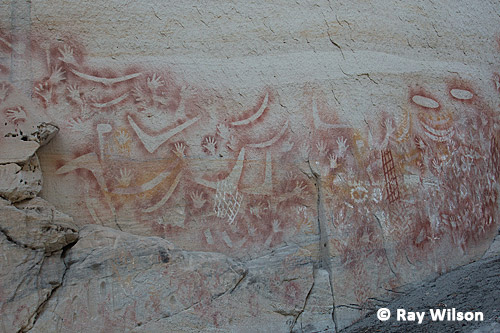
In addition to the stencil art there are also numerous examples of rock carvings at the area known as the "Art Gallery". Most of these are depictions of human vulvas, carved by the women of the tribe in secret fertility rituals.
Rock carvings of the rainbow serpent and numerous fertility symbols at the "Art Gallery"
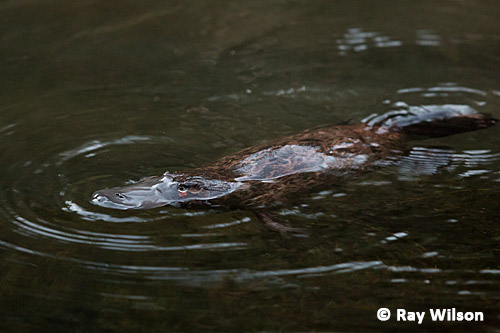
Duck-billed Platypus (Ornithorhynchus anatinus)
The river flowing through the valley provides a rare source of permanent water to the area and is home to several pairs of Platypus, one of which can usually be seen just behind Takarakka Lodge, although they are extremely crepuscular and are only active at dusk and dawn when it is practically dark.
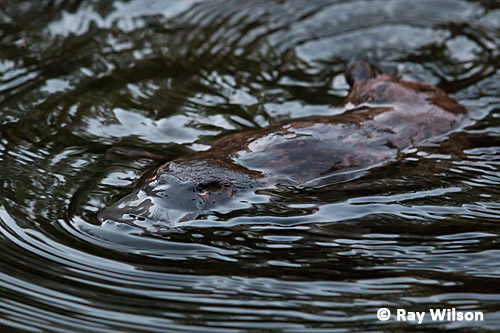
Duck-billed Platypus (Ornithorhynchus anatinus)
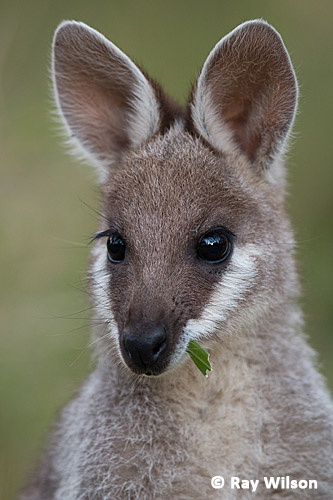
|
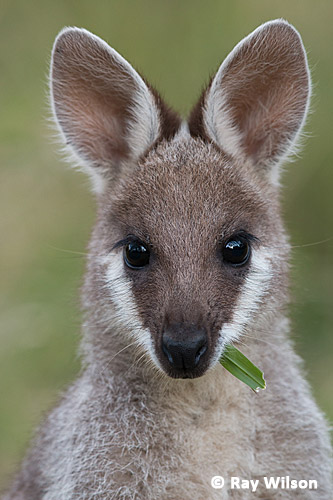
|
Whiptail Wallaby (Macropus parryi)
Macropods (kangaroos and wallabies) are my favourite group of mammals and I can happily spend hours watching them, especially when I come across a group that allows me to approach close enough to take intimate headshots of their expressive faces. The Whiptail Wallaby is particularly photogenic in this respect and from these photos it is easy to see how these gorgeous creatures got their alternative English name: the Pretty-face Wallaby.
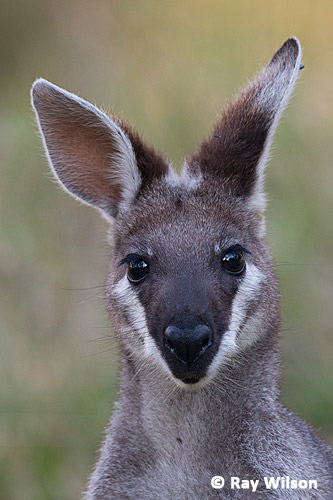
|
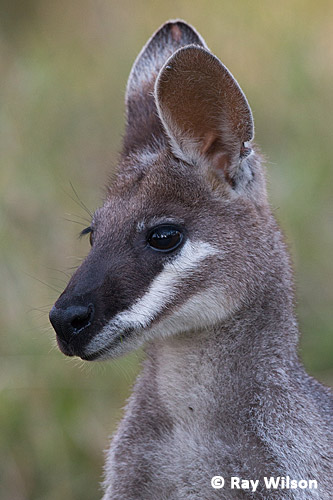
|
Whiptail Wallaby (Macropus parryi)
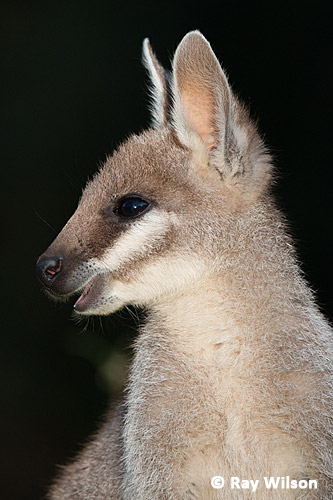
Whiptail Wallaby (Macropus parryi)
Along the riverbank at the back of the lodge, it wasn't unusual to see very tame, mixed groups of Eastern Grey Kangaroo and Whiptail Wallabies feeding side-by-side.
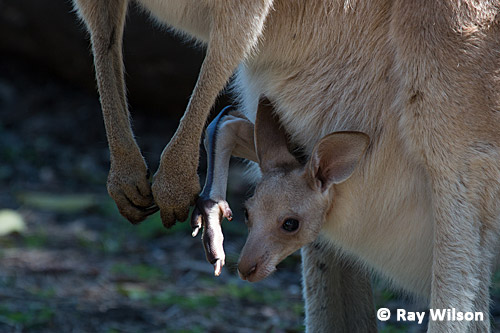
Eastern Grey Kangaroo (Macropus giganteus)
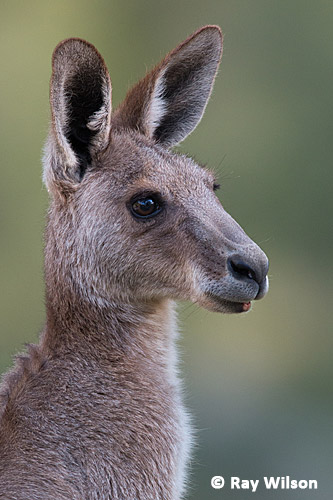
|
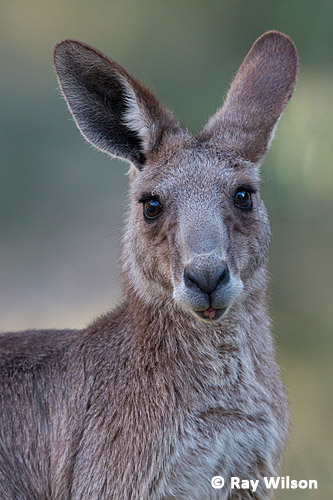
|
Eastern Grey Kangaroo (Macropus giganteus)
Also at the back of the campsite, both Red-backed and Variegated Fairywrens could sometimes be found together in the same patch of bushes.
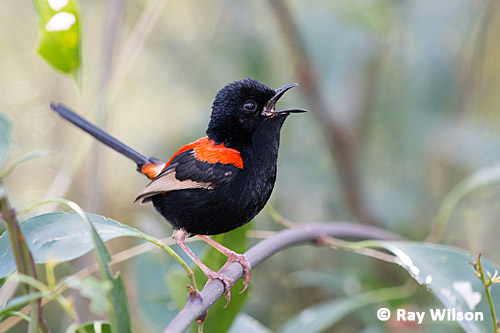
male Red-backed Fairywren (Malurus melanocephalus)
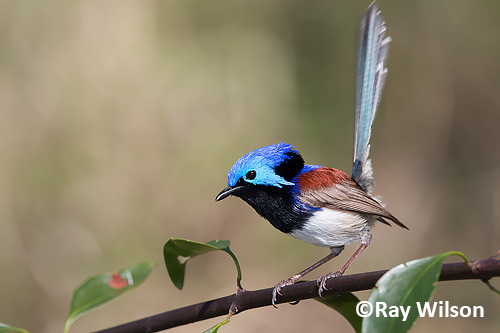
Variegated Fairywren (Malurus lamberti)
The Queensland race of White-browed Scrubwren (S. f. laevigaster) has a much bolder facial pattern than the races found further south and is a very distinctive bird.
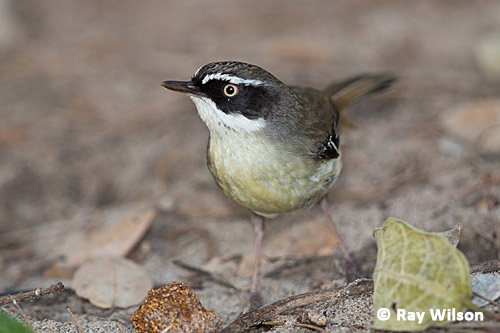
White-browed Scrubwren (Sericornis frontalis laevigaster)
Fan-tailed Cuckoo (Cacomantis flabelliformis)
A small group of Channel-billed Cuckoo, an impressive bird which is larger than a Raven, were regularly seen among the trees bordering the river. They are breeding summer visitors to Australia and had only just arrived back from its wintering grounds in Papua New Guinea and Indonesia. Like most cuckoos the Channel-billed is a brood parasite and lays its eggs in the nests of species such as Pied Currawong, Australian Magpie and Torresian Crow.
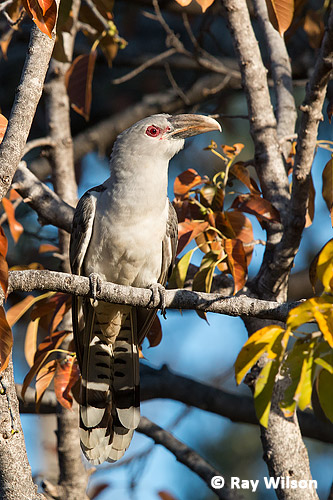
Channel-billed Cuckoo (Scythrops novaehollandiae) |
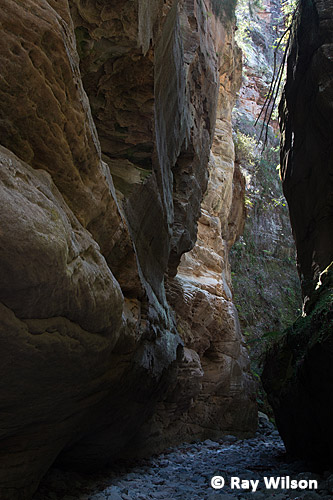
Boowinda Gorge |
The spectacularly narrow Boowinda Gorge is a side canyon that branches off from the main gorge just upstream of Cathedral cave.
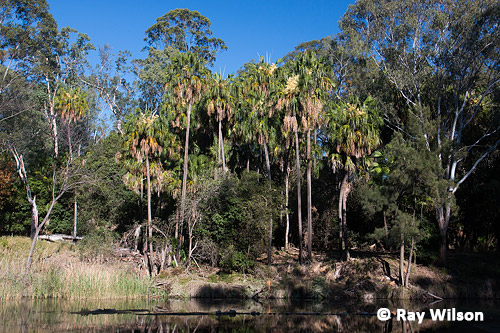
Carnarvon Fan Palms (Livistona nitida)
Carnarvon Gorge is a stronghold for Carnarvon Fan Palms, a species which is endemic to the Dawson River catchment area.
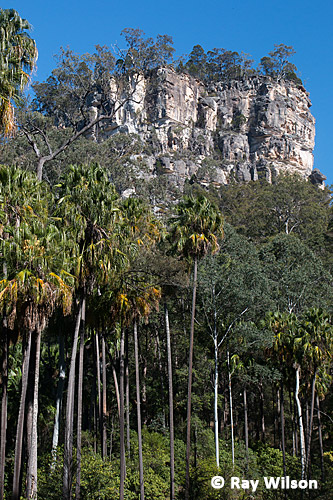
Carnarvon Fan Palms (Livistona nitida) |
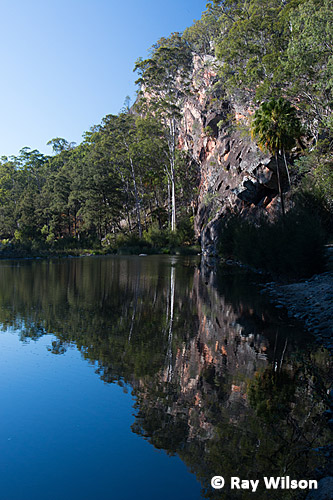
Rock Pool |
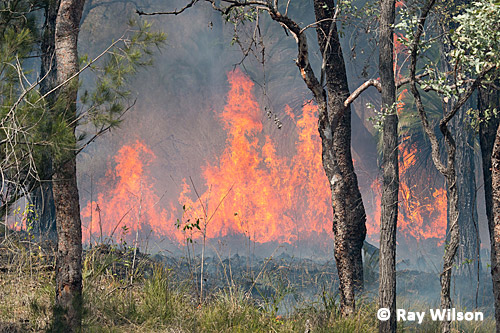
"controlled" bush fire
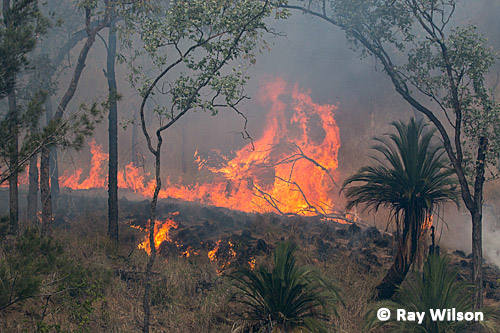
"controlled" bush fire
Ray Wilson owns the copyright of all images on this site.
They may not be used or copied in any form without prior written permission.
raywilsonphotography@googlemail.com
